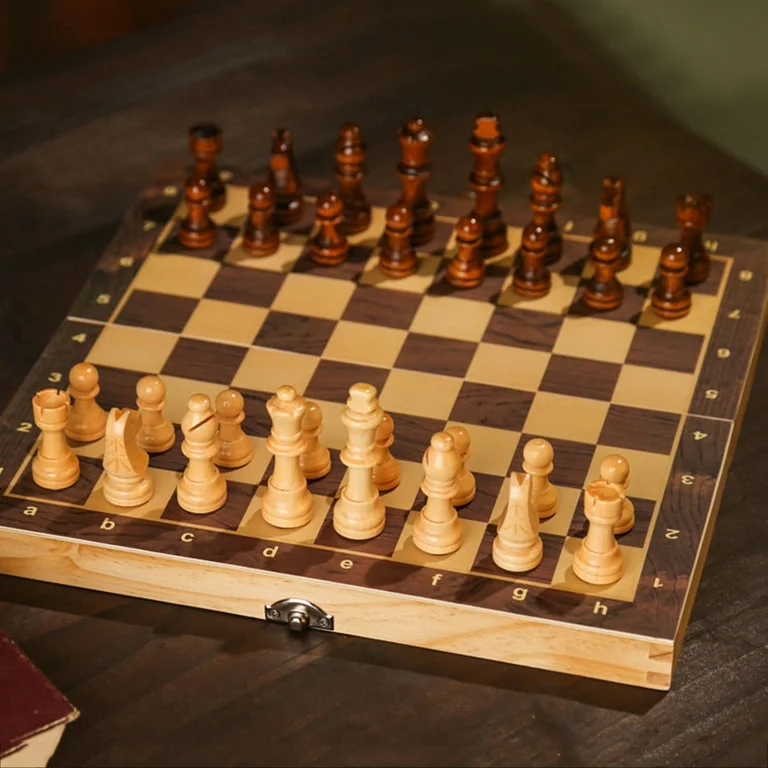
Introduction to Chess: A Timeless Strategy Game
Chess, a game of profound strategic depth and historical significance, has captivated minds for centuries. Originating in the Indian subcontinent around the 6th century AD, it evolved through Persia and the Islamic world before reaching Europe in the Middle Ages. The game has long been associated with royalty and intellectuals, symbolizing a battlefield where one’s mental acuity, foresight, and planning are continuously tested.
The significance of chess extends beyond mere gameplay; it serves as a mental exercise that enhances cognitive functions, including problem-solving, critical thinking, and strategic planning. Chess’s impact stretches across various cultures and eras, enriching the intellectual heritage worldwide. Its resurgence in the digital age has democratized access, allowing enthusiasts from all walks of life to engage with the game through online platforms and interactive tutorials.
A standard chessboard consists of 64 squares, arranged in an 8×8 grid. Each player commands an army of 16 pieces: one king, one queen, two rooks, two bishops, two knights, and eight pawns. The fundamental objective in chess is to checkmate the opponent’s king, placing it under an inescapable threat of capture.
The pieces each move in distinct patterns: the king moves one square in any direction, the queen boasts the most versatile movements by combining the bishop and rook’s capabilities, bishops slide diagonally, rooks drive vertically or horizontally, knights jump in an L-shape, and pawns advance forward with an initial option to move two squares. Understanding these movements is essential for implementing strategies and tactics.
Chess strategy involves long-term planning and positioning, while tactics focus on immediate, short-term maneuvers, often involving sacrifices and combinations to gain material or positional advantage. Mastery of these elements lays the groundwork for deeper exploration into specialized strategies, opening theory, middle-game maneuvers, and endgame techniques covered in subsequent sections.
Key Strategies and Common Tactics in Chess
Mastering the game of chess involves a deep understanding of various strategies and tactics that can be employed to gain an edge over your opponent. At the core of these strategies lie the opening principles, essential guidelines that set the tone for the rest of the game. Central control is paramount; players often aim to dominate the center of the board early on, using pawns and pieces to occupy or exert influence over key central squares. Common opening systems like the Ruy-Lopez, Sicilian Defense, and Queen’s Gambit illustrate different ways to achieve this central dominance while preparing for a robust middle-game.
As the game transitions from the opening to the middle-game, the focus shifts to piece activity, king safety, and pawn structure. Tactics such as forks, pins, and skewers come into play, requiring players to stay vigilant and create threats that force the opponent into disadvantageous positions. For instance, a fork involves attacking two or more pieces simultaneously with a single move, often compelling the opponent to sacrifice material. Pins and skewers are particularly effective when the pinned piece cannot move without exposing a more valuable piece behind it.
Moreover, effective use of pawns is crucial in both the opening and middle-game phases. Pawns not only control key squares, but also serve to support more advanced pieces and can open lines for rooks and bishops. The importance of a solid pawn structure cannot be overstated, as it provides both offensive and defensive advantages that can be decisive in the game’s outcome.
As the game proceeds to the endgame, the principles shift once again. Here, the primary goals often include promoting pawns and executing checkmating techniques. Promoting a pawn to a queen or other powerful piece can decisively tip the balance of the game in one’s favor. Checkmating techniques, especially those involving coordinated actions by multiple pieces, are essential skills for closing out the game.
To bridge the gap between theory and practice, we recommend watching the linked video tutorial. This visual guide offers practical demonstrations of the discussed strategies, illustrating key concepts like opening principles, middle-game tactics, and endgame techniques. By watching these expert insights, players can gain a more intuitive understanding of how to apply these strategies in their own games.
Analyzing Classic Chess Games: Learning from the Masters
To gain a deep understanding of advanced strategies and tactics, one must study the games of world-class chess masters. The careful analysis of classic chess games reveals the nuances and complexities that make the game both intellectually stimulating and strategic. Historical matches like the legendary 1972 World Championship between Bobby Fischer and Boris Spassky, as well as modern classics like Garry Kasparov vs. Deep Blue, provide invaluable lessons for both novice and experienced players.
Examining these games move-by-move offers insights into the thought processes of the grandmasters. For instance, the Fischer-Spassky match showcased Fischer’s aggressive style and Spassky’s defensive prowess. Key decisions, such as Fischer’s pawn sacrifice in game six, demonstrate the importance of planning several moves ahead and anticipating the opponent’s response. Similarly, Kasparov’s games against Deep Blue highlight the evolving challenge of competing against artificial intelligence, pushing the boundaries of human strategic thinking.
The importance of studying classic games extends beyond individual brilliance; it also encompasses famous rivalries that shaped modern chess. The fierce competition between Kasparov and Anatoly Karpov in the 1980s and 1990s not only captivated the world but also contributed to evolving chess theory. Their battles introduced new opening theories and endgame techniques that are still relevant today.
To further enrich your understanding, embedded video analyses provide an expert’s perspective on these pivotal matches. In the embedded video below, a seasoned player dissects key moments from Fischer vs. Spassky, explaining the strategic considerations and tactical nuances in a way that only someone with advanced chess knowledge can. This blend of written analysis and visual content fosters a deeper appreciation of high-level play, making complex concepts more accessible and engaging.
By studying these classic games and leveraging expert insights, one can significantly enhance their strategic depth and tactical acuity in the game of chess.
Improving Your Chess Skills: Tips and Resources
Enhancing your chess skills requires a multi-faceted approach that combines regular practice, strategic learning, and leveraging various resources. The cornerstone of improvement lies in consistent practice. Engaging in activities such as solving chess puzzles can sharpen your tactical skills, while playing against a variety of opponents, both human and AI, exposes you to diverse playing styles and strategies. Each match brings new challenges, aiding in the development of a robust understanding of the game.
Analyzing past games is another critical aspect of skill enhancement. By reviewing your moves and strategies, you can identify strengths to build on and mistakes to avoid in future matches. Many advanced players use this technique to refine their tactics and plan more sophisticated strategies.
In addition to practicing, accessing quality resources can significantly boost your learning curve. Numerous chess books cater to different levels, from beginners to advanced players. Well-regarded titles such as “Bobby Fischer Teaches Chess” or “My System” by Aron Nimzowitsch provide deep insights into the game. Furthermore, online courses and tutorials offer structured learning pathways, with platforms like Chess.com providing interactive lessons and coaching sessions.
Chess apps are another excellent tool for improvement, offering features like puzzles, analysis engines, and progress tracking. Engaging in chess clubs, whether physical or virtual, can provide valuable networking opportunities and exposure to competitive play. Participation in these communities can offer both mentorship and a sense of camaraderie.
Playing on online platforms is particularly beneficial, as it allows for experiencing international competition and varied gameplay styles. Websites such as Lichess.org and Chess24 offer global player pools and tournaments, broadening your experience and honing your skills against diverse opponents.
Setting individual goals and tracking your progress is vital for continuous improvement. Whether it’s mastering a specific opening, achieving a rating milestone, or refining end-game techniques, having clear objectives guides your practice and keeps you motivated.
For personalized tips and motivational advice, consider incorporating video segments from experienced chess coaches. These insights can reinforce written strategies and offer a dynamic, engaging learning experience. A well-rounded approach combining practice, resources, and expert guidance can significantly bolster your chess prowess.


